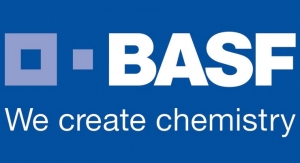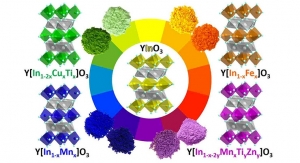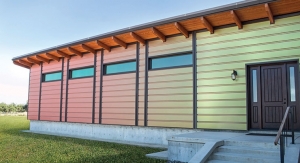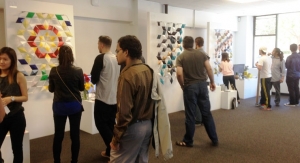05.11.16
Predicting the up-and-coming colors of automotive design is a challenge the designers from BASF’s Coatings division tackle every year. The overarching theme for this year’s collection of 65 colors is “Parallax”, a concept that objects appear shifted or changed when viewed from different angles. The two competing vantage points that shape our modern world are: the fascination of the virtual world and the longing for honest self-expression.
Multi-faceted colors make up the global trend
On the global level, the ambiguous relation between the virtual and the physical world becomes visible on the automotive color palettes: Synthetic, metallic blue, silver and white hues stand for the trend towards digitalization of the daily life. Chromatic colors and natural hues demonstrate a contradiction – a search for authentic experiences and emotions, especially in urban areas. Innovative pigment effects that enable two or more colors to be combined along with metallic urban shades will enrich the color portfolio of the cars of tomorrow.
Specific local conditions and developments shape the way global trends are adapted regionally:
Changing identities in Europe
The European trend is guided by the question “What comes after the hashtag?” – the search for a way to adapt to the digital world without losing track of real experiences and identities. A major color direction for the automotive industry is represented by ASMR Blue: an intense metallic blue, which combines a digital look and feel with a materialized metallic effect. Blue in general will gain market share with the help of these possible refreshments.
Progressive trend in North America
The highlighted North American color, Raingarden, is a soft sophisticated silver that transitions between green and blue, depending on the viewing angle. The subtle blending of colors shows that the lines of how individuals behave in society and how they’re influenced by technology are blurred. The unique combination of pigments and technical finesse needed to create this effect exemplifies BASF’s coatings capabilities.
Color trend in Asia Pacific: emerging self-confidence
Despite economic and other challenges in the region, Asians remain confident in their future success. This optimistic approach is reflected in fresh, playful colors such as blue-green. In addition, Asians are looking for creativity and quality, which can be found in the delicate textures of a metallic sand beige color, demonstrating the connection between traditional values and typical Asian elegance.
Diversified colors for motorcycles: from stylish classical colors to creative, futuristic colors
In the motorcycle market, riders are becoming more diverse in recent years. This creates increasing demands for attractive motorcycle designs with different color elements that can symbolize one’s unique characteristics. Sophisticated classical motorcycle colors such as garnet-like colors and grayish-blue, as well as well-worn tones such as copper and black iron, are becoming popular. In addition, both warm and cool metallic pastel colors, suggesting creativity and carrying a futuristic image, are fresh to the motorcycle industry. Both young people and women are showing a preference for stylish, unique colors, which demonstrate the personalities of Asia.
Expertise from around the globe
Automotive Color Trends pulls expertise from studios in Asia Pacific, Europe and North America. Through intensive collaboration, the teams provide automotive customers with global trends and regional differences in the world of color. BASF’s design competency is the key to identifying trends at an early stage that have the potential to represent a brand throughout a car’s life cycle.
Regional color design team in Asia for Asia
BASF’s regional color design team in Asia Pacific employs designers from diverse backgrounds, offering design consultancy services to customers in the dynamic Asian markets.
“Every year, BASF predicts the colors that will play a role for cars in the future. Our annual color trend forecast puts a higher focus on the developments of chromatic colors: when compared to achromatic colors such as white, silver, grey and black, chromatic colors change much faster and are strategically more important to our automotive OEM customers to appeal to their end-users,” explained Chiharu Matsuhara, Chief Color Designer at BASF's Coatings division in Asia Pacific. “We are one of the world’s leading automotive coatings suppliers and work very closely with the automotive industry. The regional color design team in Asia Pacific is dedicated to serving our customers in the region and providing them with up-to-date color intelligence.”
Multi-faceted colors make up the global trend
On the global level, the ambiguous relation between the virtual and the physical world becomes visible on the automotive color palettes: Synthetic, metallic blue, silver and white hues stand for the trend towards digitalization of the daily life. Chromatic colors and natural hues demonstrate a contradiction – a search for authentic experiences and emotions, especially in urban areas. Innovative pigment effects that enable two or more colors to be combined along with metallic urban shades will enrich the color portfolio of the cars of tomorrow.
Specific local conditions and developments shape the way global trends are adapted regionally:
Changing identities in Europe
The European trend is guided by the question “What comes after the hashtag?” – the search for a way to adapt to the digital world without losing track of real experiences and identities. A major color direction for the automotive industry is represented by ASMR Blue: an intense metallic blue, which combines a digital look and feel with a materialized metallic effect. Blue in general will gain market share with the help of these possible refreshments.
Progressive trend in North America
The highlighted North American color, Raingarden, is a soft sophisticated silver that transitions between green and blue, depending on the viewing angle. The subtle blending of colors shows that the lines of how individuals behave in society and how they’re influenced by technology are blurred. The unique combination of pigments and technical finesse needed to create this effect exemplifies BASF’s coatings capabilities.
Color trend in Asia Pacific: emerging self-confidence
Despite economic and other challenges in the region, Asians remain confident in their future success. This optimistic approach is reflected in fresh, playful colors such as blue-green. In addition, Asians are looking for creativity and quality, which can be found in the delicate textures of a metallic sand beige color, demonstrating the connection between traditional values and typical Asian elegance.
Diversified colors for motorcycles: from stylish classical colors to creative, futuristic colors
In the motorcycle market, riders are becoming more diverse in recent years. This creates increasing demands for attractive motorcycle designs with different color elements that can symbolize one’s unique characteristics. Sophisticated classical motorcycle colors such as garnet-like colors and grayish-blue, as well as well-worn tones such as copper and black iron, are becoming popular. In addition, both warm and cool metallic pastel colors, suggesting creativity and carrying a futuristic image, are fresh to the motorcycle industry. Both young people and women are showing a preference for stylish, unique colors, which demonstrate the personalities of Asia.
Expertise from around the globe
Automotive Color Trends pulls expertise from studios in Asia Pacific, Europe and North America. Through intensive collaboration, the teams provide automotive customers with global trends and regional differences in the world of color. BASF’s design competency is the key to identifying trends at an early stage that have the potential to represent a brand throughout a car’s life cycle.
Regional color design team in Asia for Asia
BASF’s regional color design team in Asia Pacific employs designers from diverse backgrounds, offering design consultancy services to customers in the dynamic Asian markets.
“Every year, BASF predicts the colors that will play a role for cars in the future. Our annual color trend forecast puts a higher focus on the developments of chromatic colors: when compared to achromatic colors such as white, silver, grey and black, chromatic colors change much faster and are strategically more important to our automotive OEM customers to appeal to their end-users,” explained Chiharu Matsuhara, Chief Color Designer at BASF's Coatings division in Asia Pacific. “We are one of the world’s leading automotive coatings suppliers and work very closely with the automotive industry. The regional color design team in Asia Pacific is dedicated to serving our customers in the region and providing them with up-to-date color intelligence.”






